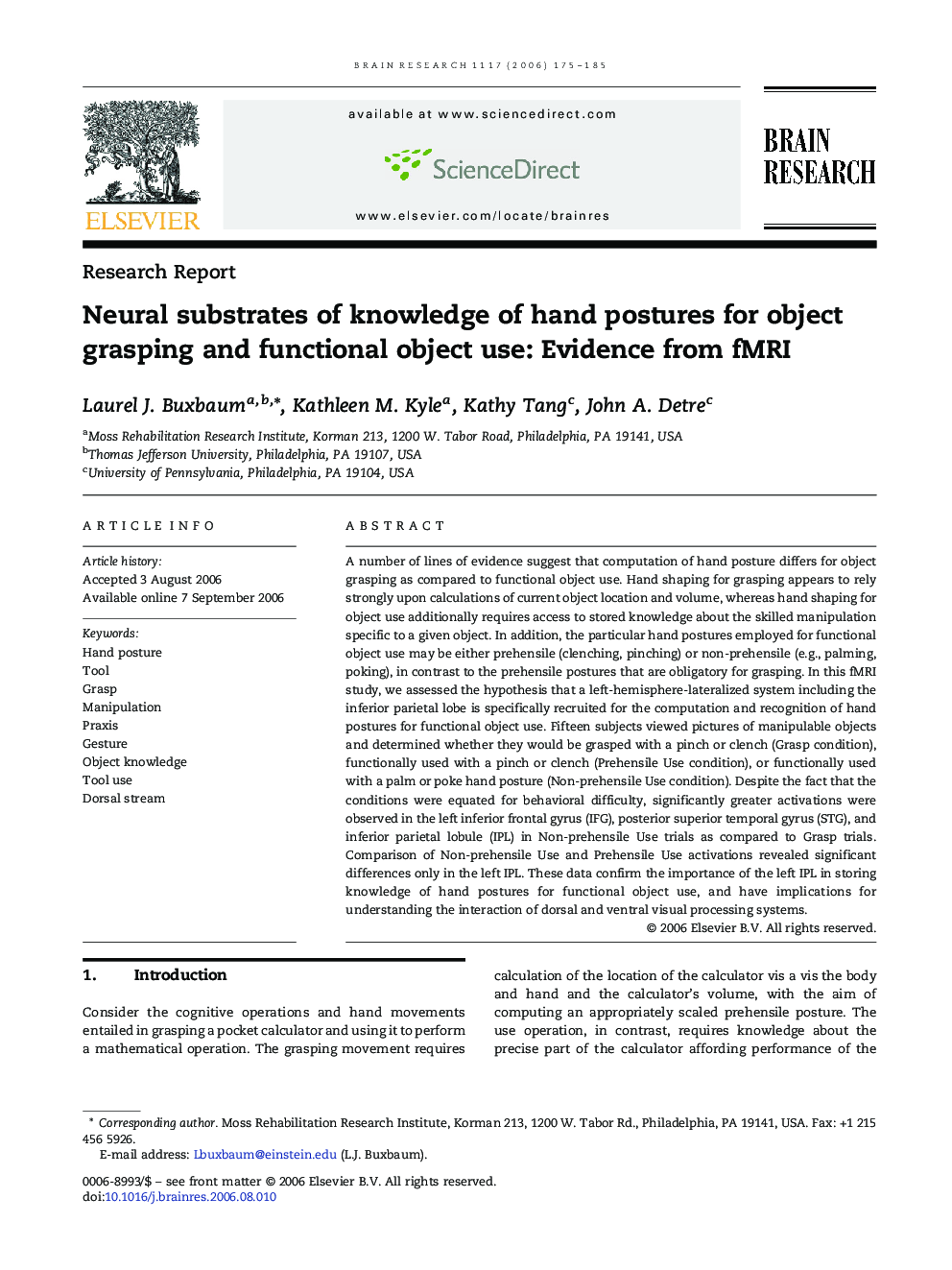| Article ID | Journal | Published Year | Pages | File Type |
|---|---|---|---|---|
| 4332176 | Brain Research | 2006 | 11 Pages |
A number of lines of evidence suggest that computation of hand posture differs for object grasping as compared to functional object use. Hand shaping for grasping appears to rely strongly upon calculations of current object location and volume, whereas hand shaping for object use additionally requires access to stored knowledge about the skilled manipulation specific to a given object. In addition, the particular hand postures employed for functional object use may be either prehensile (clenching, pinching) or non-prehensile (e.g., palming, poking), in contrast to the prehensile postures that are obligatory for grasping. In this fMRI study, we assessed the hypothesis that a left-hemisphere-lateralized system including the inferior parietal lobe is specifically recruited for the computation and recognition of hand postures for functional object use. Fifteen subjects viewed pictures of manipulable objects and determined whether they would be grasped with a pinch or clench (Grasp condition), functionally used with a pinch or clench (Prehensile Use condition), or functionally used with a palm or poke hand posture (Non-prehensile Use condition). Despite the fact that the conditions were equated for behavioral difficulty, significantly greater activations were observed in the left inferior frontal gyrus (IFG), posterior superior temporal gyrus (STG), and inferior parietal lobule (IPL) in Non-prehensile Use trials as compared to Grasp trials. Comparison of Non-prehensile Use and Prehensile Use activations revealed significant differences only in the left IPL. These data confirm the importance of the left IPL in storing knowledge of hand postures for functional object use, and have implications for understanding the interaction of dorsal and ventral visual processing systems.
